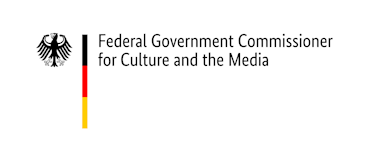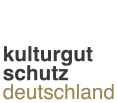Cultural property law abroad
This website – which is continually being expanded – provides information on the legal situation regarding the protection of cultural property in other countries, in implementation of the provisions of Section 4 (1) (2) of the German Act on the Protection of Cultural Property (Kulturgutschutzgesetz, KGSG). Particular emphasis is placed on the signatory states to the 1970 UNESCO Convention on the Means of Prohibiting and Preventing the Illicit Import, Export and Transfer of Ownership of Cultural Property, and the information is updated on an ongoing basis.
Almost all countries around the globe have enacted export regulations with the aim of protecting cultural goods
As is the case for non-cultural goods, other countries have also adopted regulations governing imports and exports of cultural goods. In some cases, the provisions of these regulations differ significantly.
Even prior to the entry into force of the Act on the Protection of Cultural Property in 2016, individuals wishing to export cultural goods from other countries (e.g. art dealers or other travellers) were obliged to comply with the export regulations in force in that country. This might entail either obtaining an export licence for the cultural object or even – as is often the case for antiques – complying with a complete ban on exports.
Infringements of these regulations attract severe penalties in certain cases. The country with the strictest laws protecting its (archaeological) cultural property is arguably Iraq; it is many decades since a licence has been issued to export antiques from this country.
Parties exporting cultural objects from their country of origin are therefore obliged (if only in their own interest) to familiarise themselves with the export regulations that apply in the relevant country in order to avoid penalties under the law of that country. Professional dealers who operate on a commercial basis also have an interest in ensuring that the goods they sell on to their customers have been exported lawfully (voluntary undertakings by professional dealers).
This section of the website on the protection of cultural property in Germany provides easy access to the regulations that apply in different countries, and supplements the travel and safety guidance provided by the German Federal Foreign Office (in German language).
Measures implemented within Germany to protect cultural property also serve to protect cultural objects exported from other countries
Since the entry into force of the Act on the Protection of Cultural Property in 2016, cultural objects can be lawfully imported into Germany only if they have been lawfully removed from their country of origin. If objects of this kind are imported unlawfully into Germany, they may be seized and returned to their country of origin.
In other words, cultural objects that have been unlawfully exported are treated as objects that have been unlawfully imported.
If Germany is the country of destination for cultural objects exported unlawfully from another country, the import regulations that apply in Germany (Sections 28 et seqq. KGSG) also serve to protect these objects.
Special due diligence requirements apply to the placement on the market of cultural objects that originate from other countries but are already in Germany (Section 40 et seqq. KGSG). The party selling the object must carry out careful checks to determine whether there are any grounds to suppose that the object might have been stolen (e.g. from a museum) or unlawfully excavated. If this is found to be the case, the object may not be placed on the market. In cases where information is provided about the regulations that apply in a particular country, reference is therefore made not only to export bans and licensing requirements, but also to bans on excavations or obligations to obtain a licence for excavations. Legal transactions involving unlawfully imported cultural objects are deemed null and void. Moreover, the Act on the Protection of Cultural Property is one of the few pieces of legislation on cultural property in force anywhere in the world that explicitly refers to the Red Lists of Cultural Objects at Risk published by the International Council of Museums (ICOM) in connection with the due diligence requirements that apply when placing cultural property on the market (Section 44 KGSG).
Cultural objects introduced unlawfully into Germany must be returned to their country of origin if the country requesting the return is an EU Member State or a UNESCO signatory state and the cultural object was exported unlawfully after the reference date specified by law. The obligation to return a cultural object to a requesting EU Member State applies on the basis of the date on which the EU internal market was created; in the case of a UNESCO signatory state, the obligation applies from the date on which the UNESCO Convention entered into force in Germany (26 April 2007).
Information about cultural property protected under international law
UNESCO maintains a multilingual database with information on the legal bases of all signatory states to the 1970 UNESCO Convention on the Means of Prohibiting and Preventing the Illicit Import, Export and Transfer of Ownership of Cultural Property. A list of the relevant signatory states can be found on UNESCO’s website and via the following links: signatory states in alphabetical order or signatory states in chronological order. A brochure explaining how to use the database can be found here. The “Sharing Electronic Resources and Laws on Crime” database (SHERLOC) operated by the United Nations Office on Drugs and Crime (UNODC) is a further source of information on the laws adopted by different countries on the protection of cultural property.
The legal bases that apply in countries that are also signatory states to the 1995 UNIDROIT Convention on Stolen or Illegally Exported Cultural Objects (Rome, 24 June 1995) are also included in the WIPO database in certain cases.
In addition to the information available in the UNESCO, SHERLOC and WIPO databases, the International Council of Museums (ICOM) publishes Red Lists of Cultural Objects at Risk for certain continents, regions or countries that are currently at particular risk, including Afghanistan, Africa, Egypt, China, the Dominican Republic, Haiti, Iraq, Cambodia, Colombia, Latin America, Libya, Mexico, Peru and Central America. As a general rule, the Red Lists include examples of object categories rather than specific cultural objects that have actually been stolen; these latter can be found in the INTERPOL database. Certain countries also maintain similar national databases of their own (e.g. Italy).
Technicalities
The information provided here is based on data forwarded to Germany’s Federal Government by the respective countries. Additional sources of information include the UNESCO database and the SHERLOC database, but information from other non-governmental sources is not included. The information provided in respect of the various countries is intended to serve as an initial guide and basic introduction to each country’s legal framework. It is therefore purely a collection and compilation of up-to-date information, which distinguishes it from works of comparative law and specialist works. The provisions of law that appear on this website have been altered as little as possible from the originals (or the English-language version of the originals).
This website also contains contact details for the authorities responsible for exports, where these details have been provided by the country in question. Contact details for consular services are made available by the German Federal Foreign Office, and can therefore be accessed by following this link.
We are grateful for any suggestions for additions or other changes; these can be forwarded via the contact form.


